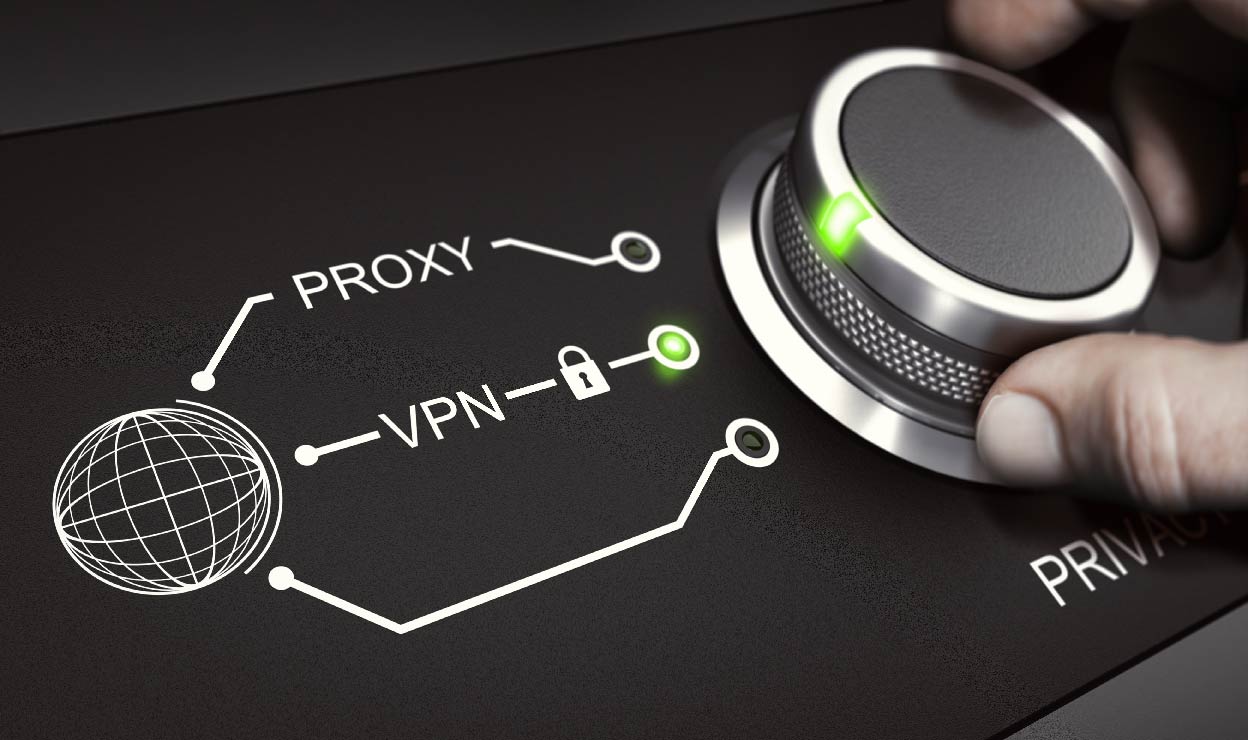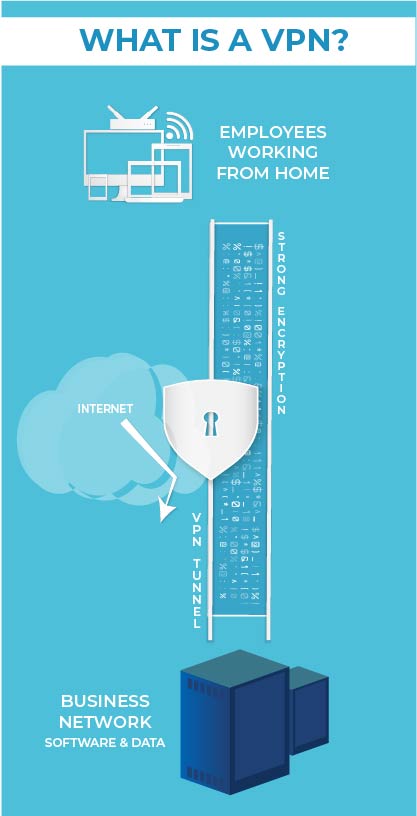REMOTE WORKFORCE | 10 MIN READ
How to Setup a Secure Network With Your Work-From-Home Employees


How to Set Up a Virtual Private Network VPN for Secure Remote Access and IP Whitelisting
With COVID-19, everyone who can is working from home. Unfortunately, this poses problems for your business. Among the top issues is data security. Your company needs customer data secure, but now you have all these employees spread out on different internet connections. It’s a security nightmare until the secure remote access is in place.
What is a VPN?
VPN is short for virtual private network. A VPN creates a tunnel between your device and a network. The passage protects your data from prying eyes even on the most unsecured public networks. The data is also encrypted before it’s sent. It’s the perfect solution for secure remote access.
VPNs offer encrypted access to your current network while still protecting your customer data. Using this tool will help protect your company and support operational capacity throughout the pandemic.

Why are VPNs Necessary?
Since your employees are working from home, many of them will have shifting IP addresses. This change is simply a feature of residential internet. So, you could require your IT department to alter your whitelist constantly and risk your data, or you can use a VPN to set up static IP addresses for your employees. The VPN option solves the whitelisting issue and protects your company’s valuable data.
Setting Up a VNP with Static IP for Work
There is no one size fits all for corporate VPNs. Picking a suitable software depends on your company size, server capabilities, and IT department, to name a couple of factors. Additionally, some of the feature-laden options come at a hefty price tag. If you’re looking to establish a VPN protocol right now, that may be the determining factor.
There are two separate parts to setting up your company’s VPN. The first is setting up the network to accept VPN connections. To begin, your company needs a VPN capable router. Most routers like this come with a quick start guide for turning the capability on. Once the VPN starts, you can alter the security settings to include the whitelist.
Now that the network is enabled, you will need to configure your employees’ computers for secure remote access. This process begins by installing a VPN client capable of talking to your router. Then your employees will need to enter the IP address for the company’s network. If you’re not using the whitelist function, this will get your employees all the access they need.
If you are using the whitelist feature for security, you’ll need your employee computers to take an additional step when working from home. This option is typically found in the setting section of the VPN client on your employees’ side. Often, the option looks like a checkbox, followed by a fill in the blank. Your IT department should send out the best IP addresses to input based on the desired whitelist.
COVID-19 may have been the compelling event that made secure remote access a necessity for your continued operation while your employees began working from home. However, continuing this practice with future employees is a wise business strategy to maintain operational flexibility for the future.
Looking to Centralize Business Communication With a Suddenly Remote Workforce? We can help!
Resources
More Articles Related Unified Communication
Why Siloed Systems Are Costing You: The Case for Platform Consolidation
Discover how siloed communication and payment platforms can lead to inefficiencies, missed revenue, and compliance issues. This article explains why modern agencies need to consolidate operations and manage the entire consumer journey within one unified platform. Intelligent Contacts’ integrated solution combines a Hosted Contact Center and a self-service payment portal to streamline operations, maintain compliance, and improve ROI. Learn how to stay ahead in 2025 by embracing an integrated, consumer-centric approach to communication and collections.”
What the ARM Industry Needs to Know as Federal Student Loan Collections Resume
After a multi-year pause initiated during the COVID-19 pandemic, the U.S. Department of Education has confirmed that collections on defaulted federal student loans will resume on May 5, 2025. This shift carries significant implications for the ARM industry — especially those engaged in debt recovery for educational and government portfolios. With nearly 10 million borrowers expected to be in default and only 38% of borrowers currently in active repayment, the market is poised for a large-scale operational resurgence.
CFPB Revokes Controversial Medical Debt Advisory Opinion in Response to Industry Pushback
In a major win for the accounts receivable and collections industry, the Consumer Financial Protection Bureau (CFPB) announced that it will revoke its controversial advisory opinion on medical debt collection, originally slated to go into effect in January 2025. The decision comes after significant legal challenges and lobbying efforts led by ACA International and other stakeholders.



